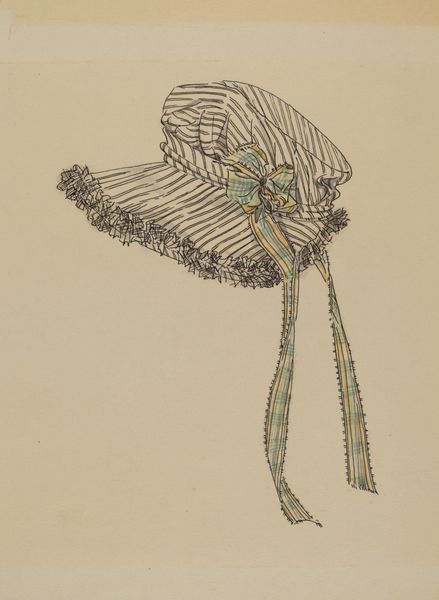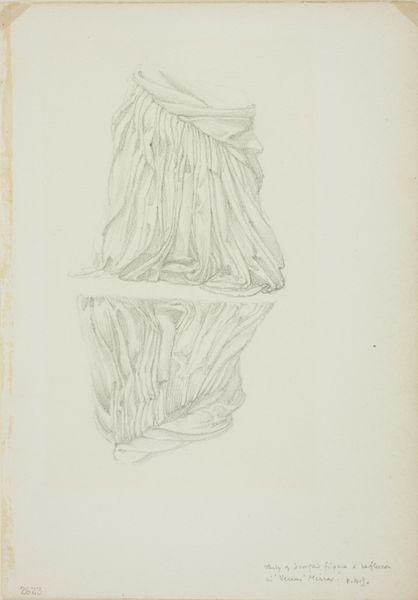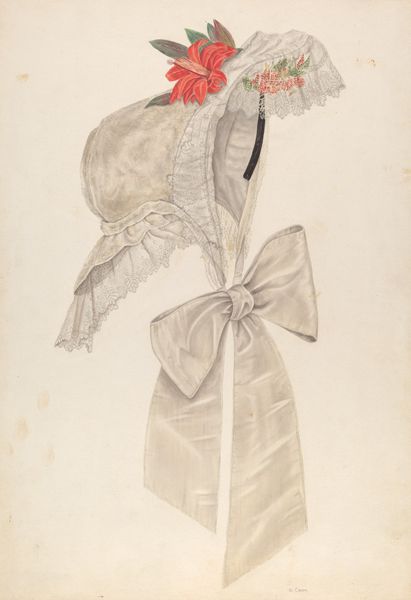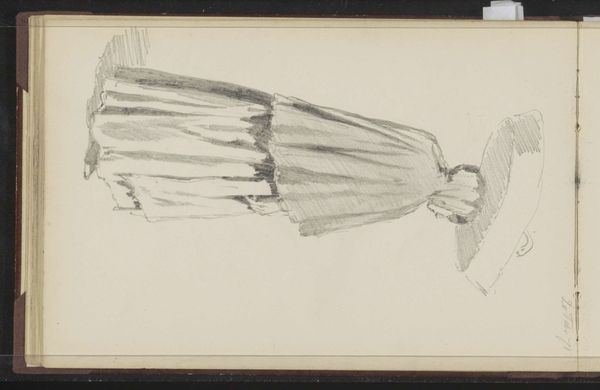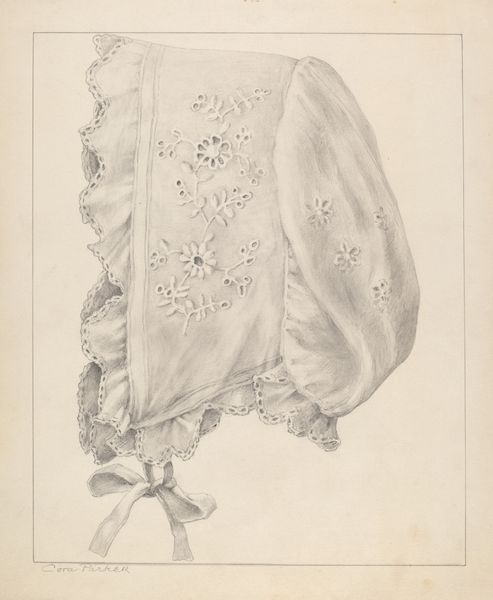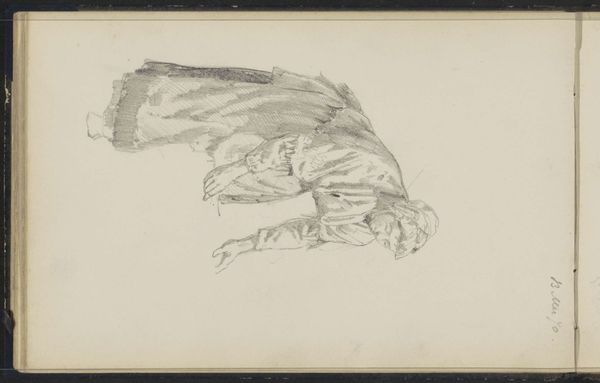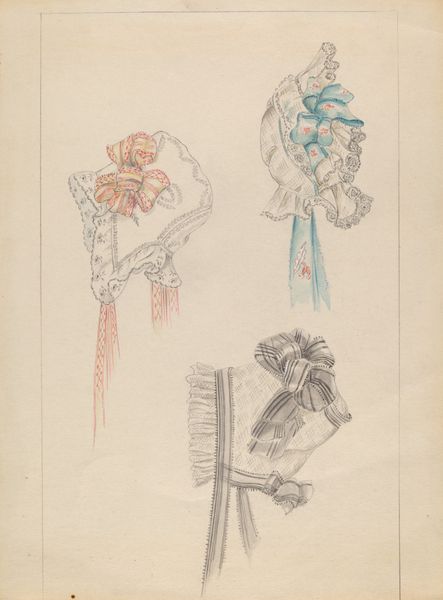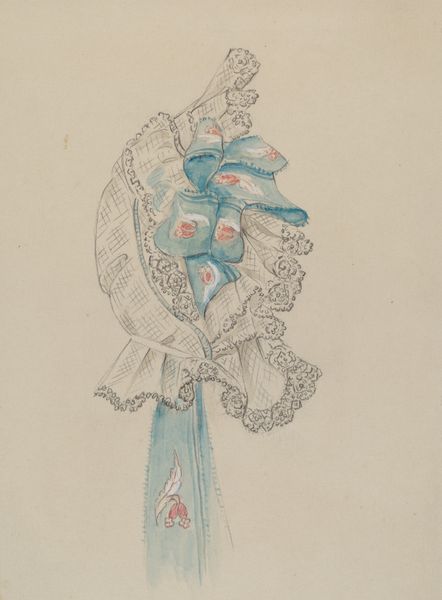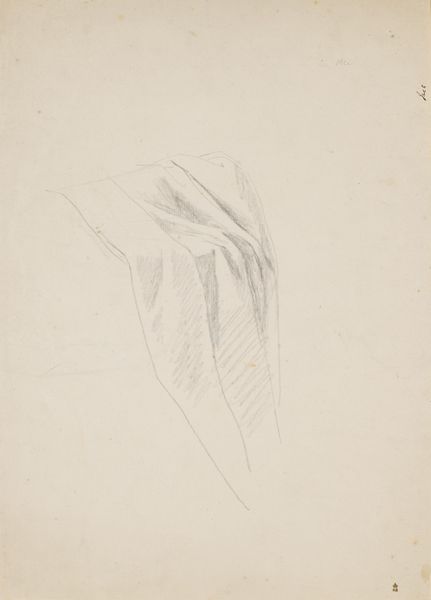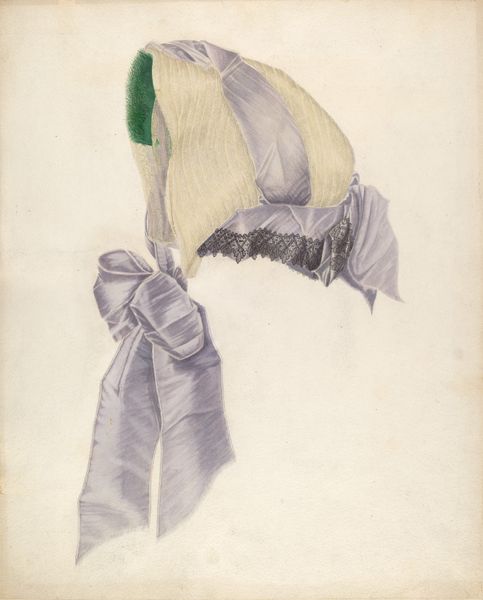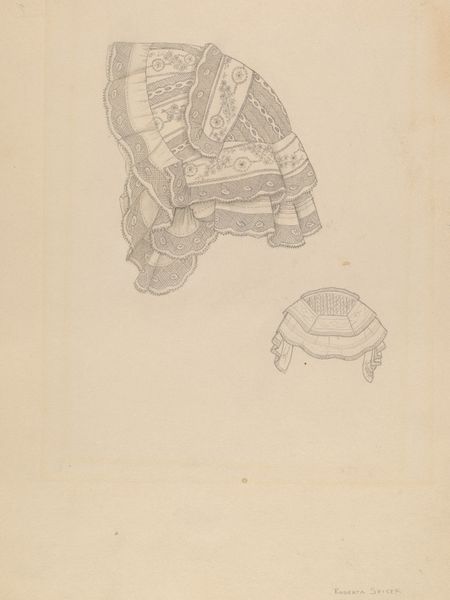
drawing, paper, watercolor, pencil
#
portrait
#
drawing
#
pencil sketch
#
figuration
#
paper
#
watercolor
#
pencil
#
pencil work
Dimensions: overall: 14.2 x 12.9 cm (5 9/16 x 5 1/16 in.)
Copyright: National Gallery of Art: CC0 1.0
Curator: Looking at Ruth Bialostosky’s drawing "Bonnet" from around 1939, done in pencil and watercolor on paper. My immediate thought: it feels so tentative, almost whispered onto the page. The grays, the textures…it’s a bit ghostly, don't you think? Editor: Interesting observation. What I immediately appreciate are the intricate details rendered with such precision. Notice the weave of the fabric and the meticulous rendering of each frill; such clear attention to texture and structure. It’s an exploration of form itself. Curator: Right, it’s definitely about texture, that careful hatching mimicking fabric. It's an intimate portrayal of everyday wear, elevating a bonnet into something quite extraordinary, a symbol almost. I keep thinking of how this reflects a very specific domestic context, maybe the artist’s own environment. What was it like being in that room? Editor: Precisely! The very visible construction becomes part of its narrative. Beyond its subject matter, Bialostosky directs our gaze toward the underlying systems: line, shape, contrast, and gradation are used with utmost proficiency. Curator: So, do you feel it has a historical conversation as well, you know with art of the time, of the place it was made, the other fashion representations. It evokes so much, those hand-made elements feel deeply present in the world that machine-made things try to overshadow. It's kind of melancholy to think about that tension. Editor: Yes, although the drawing’s medium makes it quite hard to evaluate it alongside photography or the art styles that incorporate the rapid spread of industrialization in a clear sense. Its focus remains on exploring light, shade and composition within a controlled format. Curator: Even within what could be described as a controlled framework, the beauty in this composition seems almost happenstance; or maybe better put: inevitable. Bialostosky has shown that emotion exists even within careful constructions. What else can we see, what is waiting just beyond what meets the eye? Editor: That subtle, almost fleeting aesthetic really creates something poignant. What could have been a functional textile illustration instead lingers, a beautiful investigation of form.
Comments
No comments
Be the first to comment and join the conversation on the ultimate creative platform.

